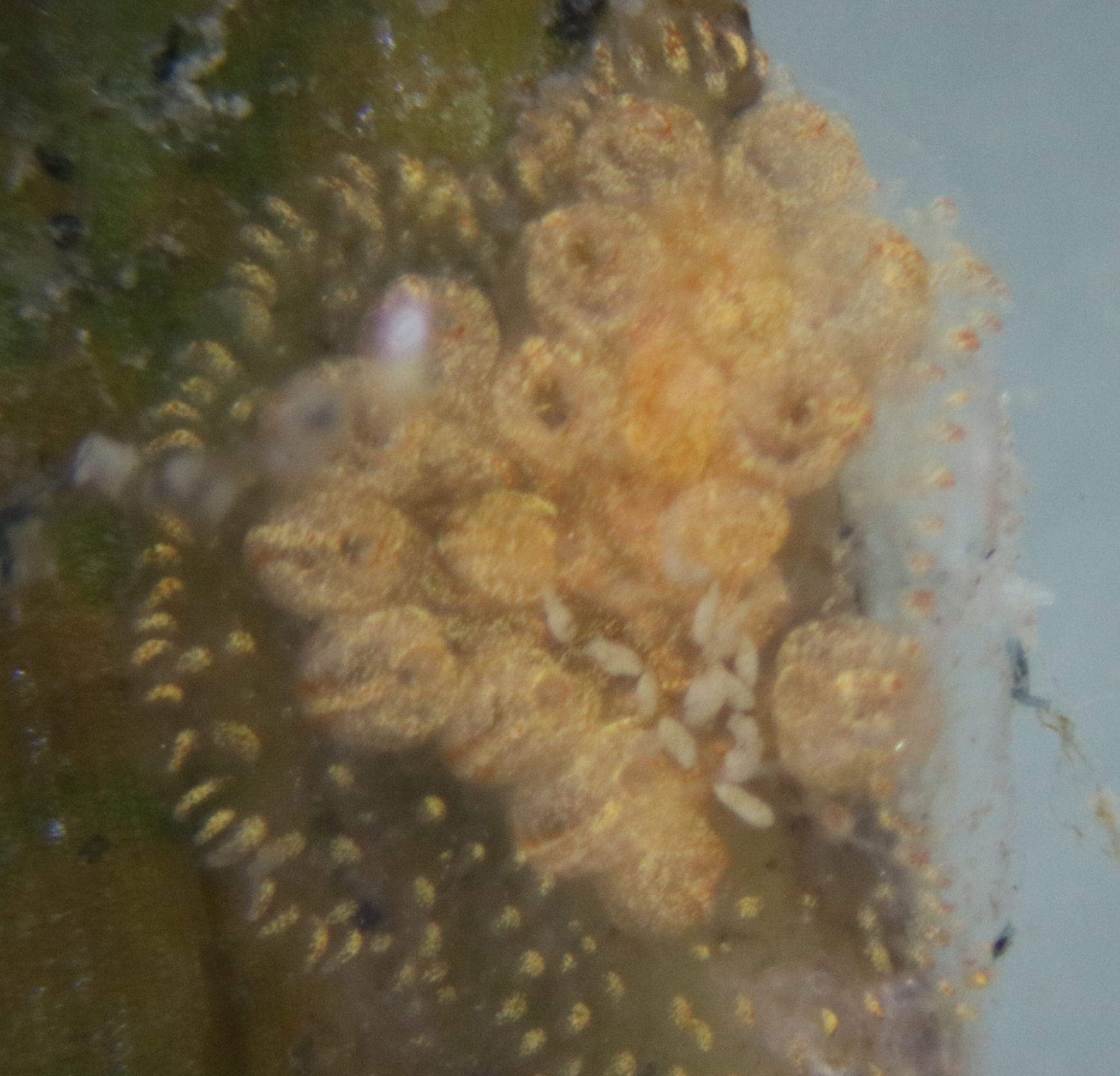Description: Members of Class Gymnolaemata have zooids that are cylindrical or flattened. Their lophophore is protruded by muscles pulling on the frontal wall. Members of Order Ctenostomata have no calcified exoskeleton, spines, nor avicularia. Instead their exoskeleton is gelatinous, chitinous, or made of a soft membrane. They also do not have an operculum and are most commonly colonies of zooids attached to elongated stolons. Their apertures are terminal (at the distal end of the zooid) and closed by circular sphincter muscles or liplike flaps. This species does not form a colony of zooids attached by stolons. Instead it forms a flat, gelatinous mass which spreads as a sheet of contiguous zooids over the substrate it is attached to. Their apertures are puckered and closed by a circular sphincter muscle.
How to Distinguish from Similar Species: Alcyonidium pedunculatum is a bit tougher gelatinous and it forms an erect colony attached to the substrate by a peduncle (narrow stalk).
Geographical Range:
Depth Range:
Habitat:
Biology/Natural History:
| Return to: | |||
| Main Page | Alphabetic Index | Systematic Index | Glossary |
References:
Dichotomous Keys:Carlton, 2007 (Genus Alcyonidium)
Kozloff, 1987, 1996
General References:
Scientific Articles:
Web sites:
General Notes and Observations: Locations, abundances,
unusual behaviors:
Authors and Editors of Page:
Dave Cowles (2021): Created original page
CSS coding for page developed by Jonathan Cowles
Salish Sea Invertebrates web site provided courtesy of Walla
Walla University
